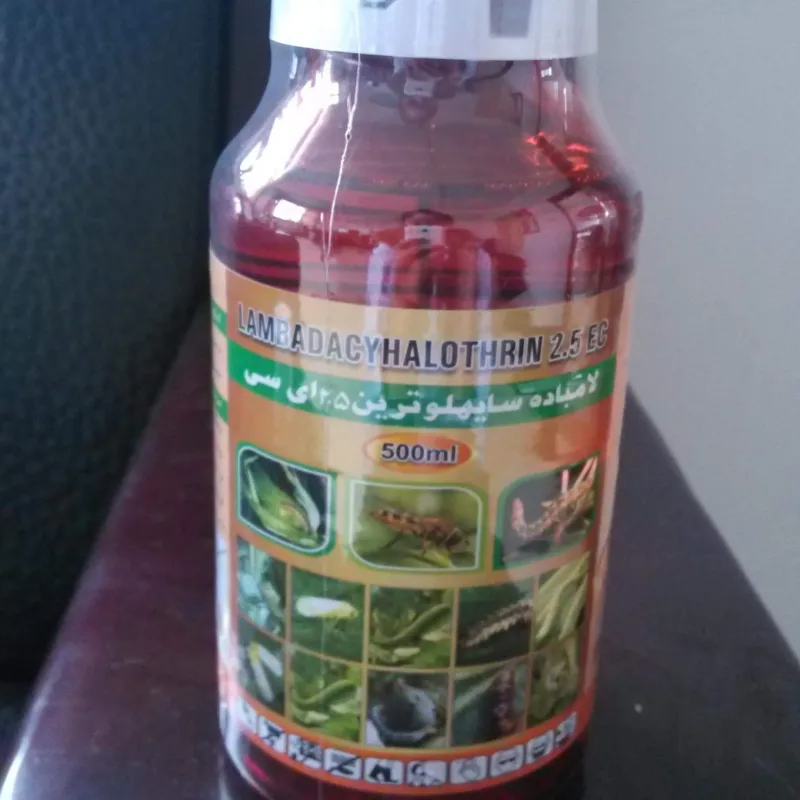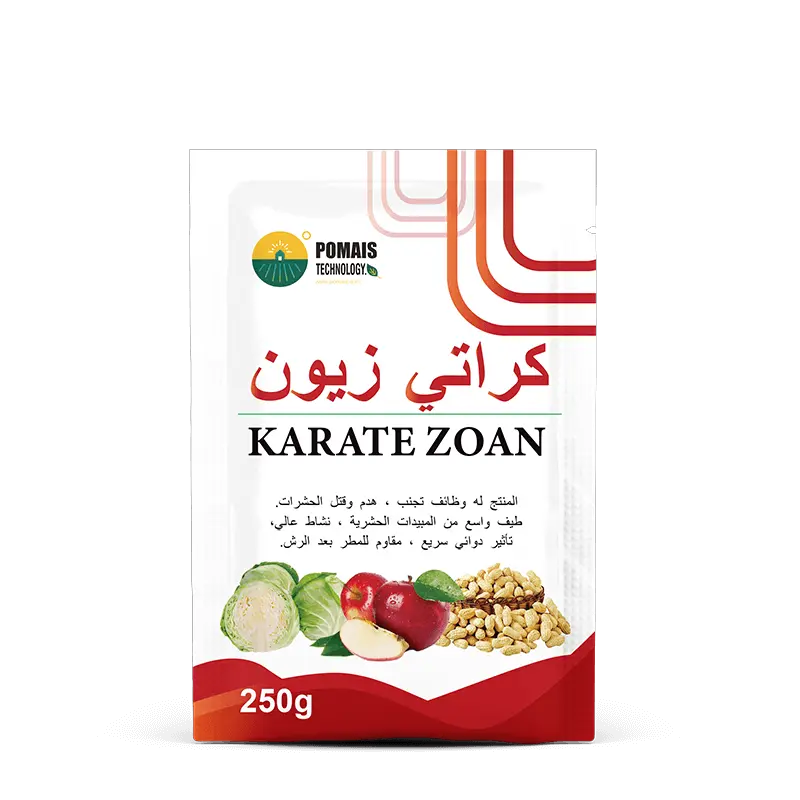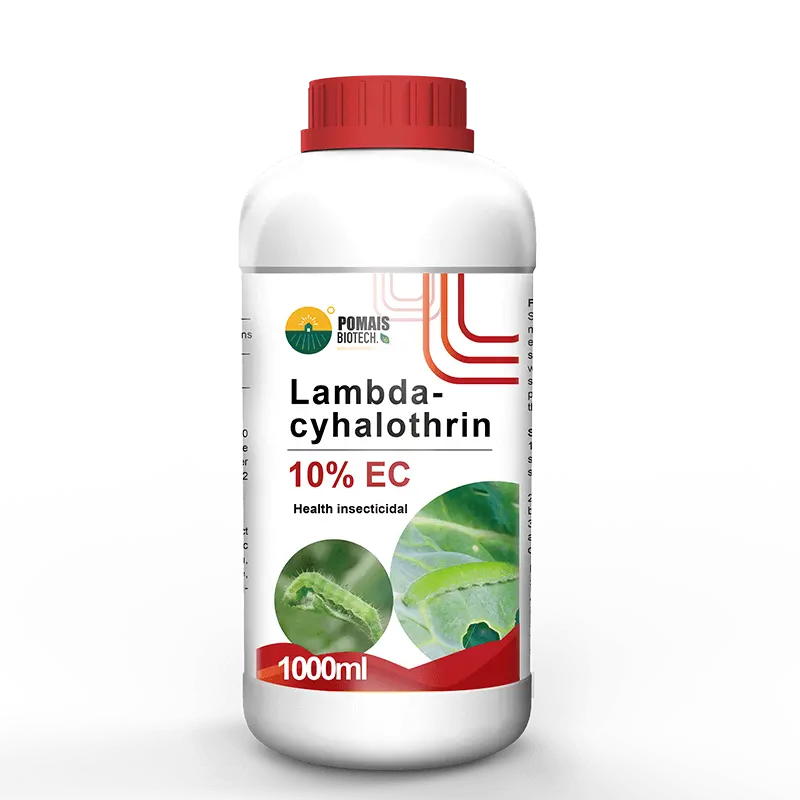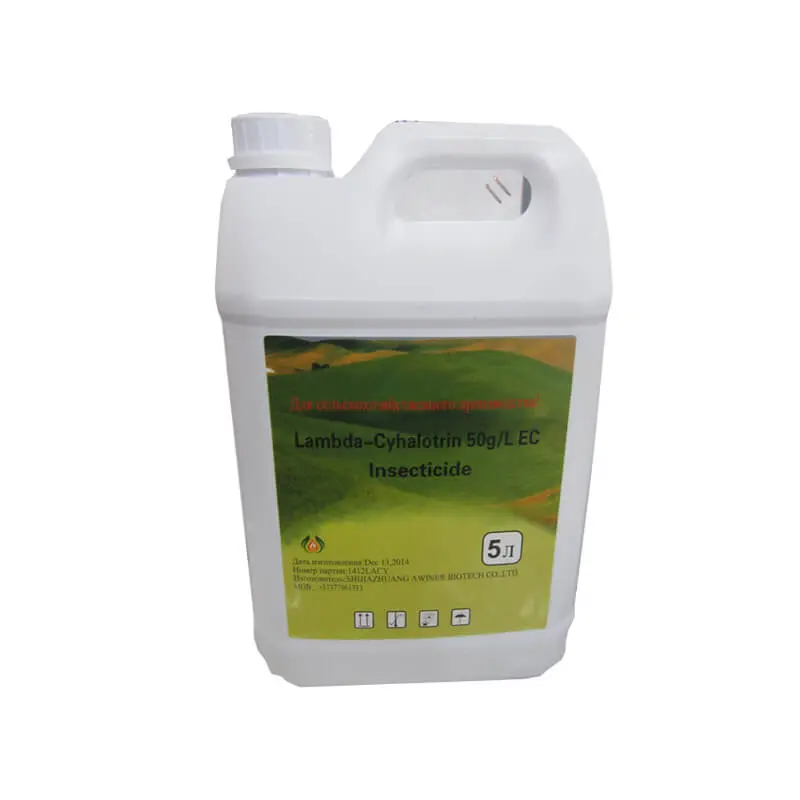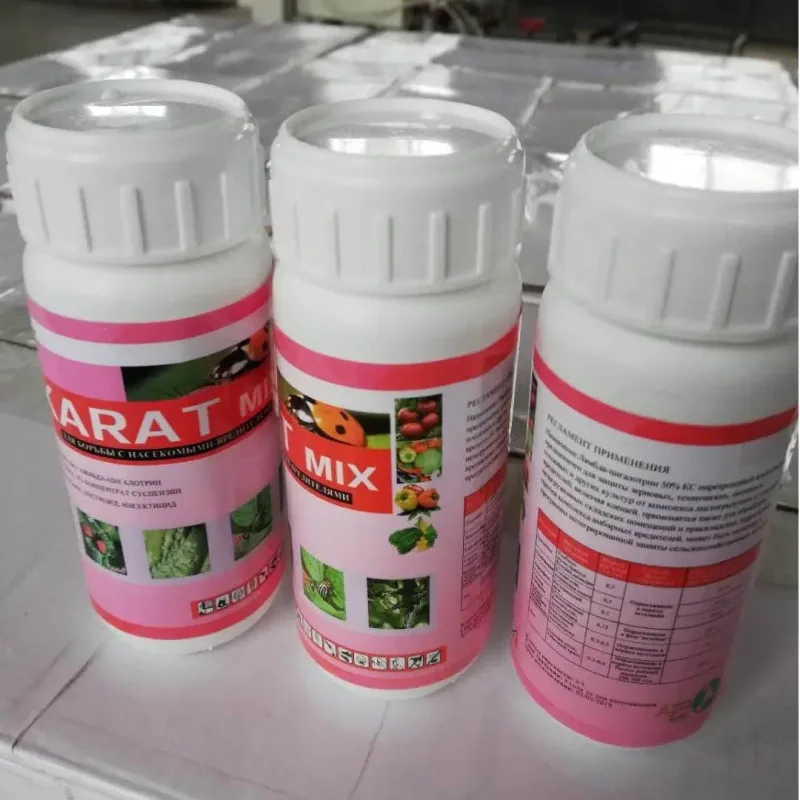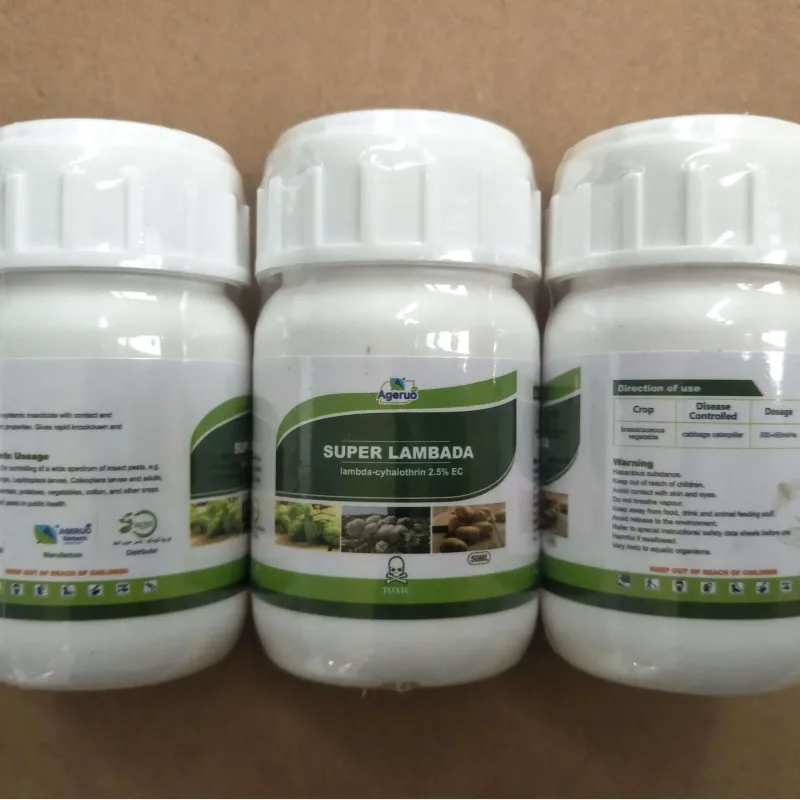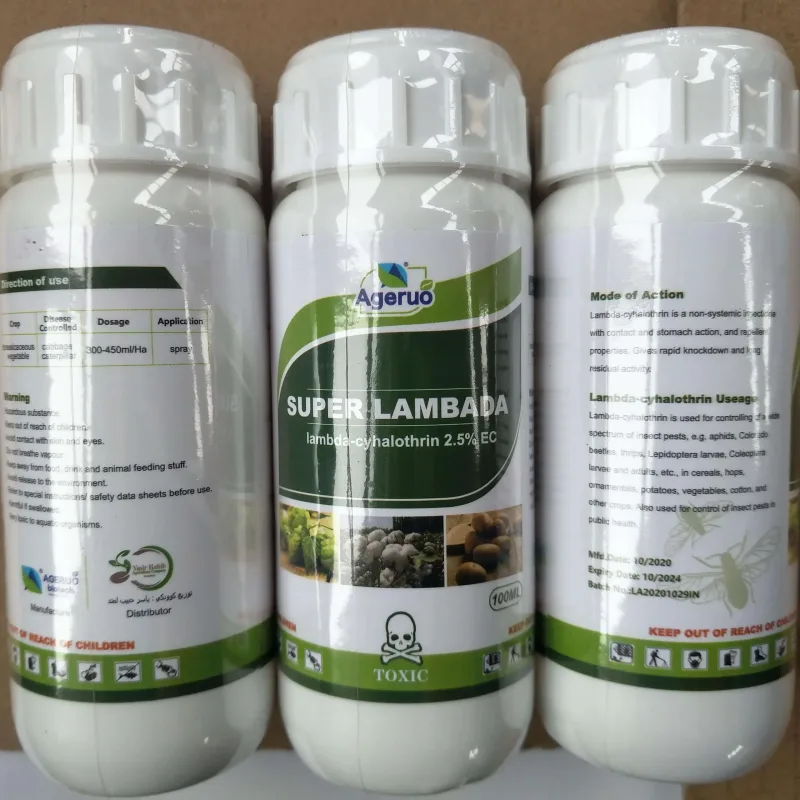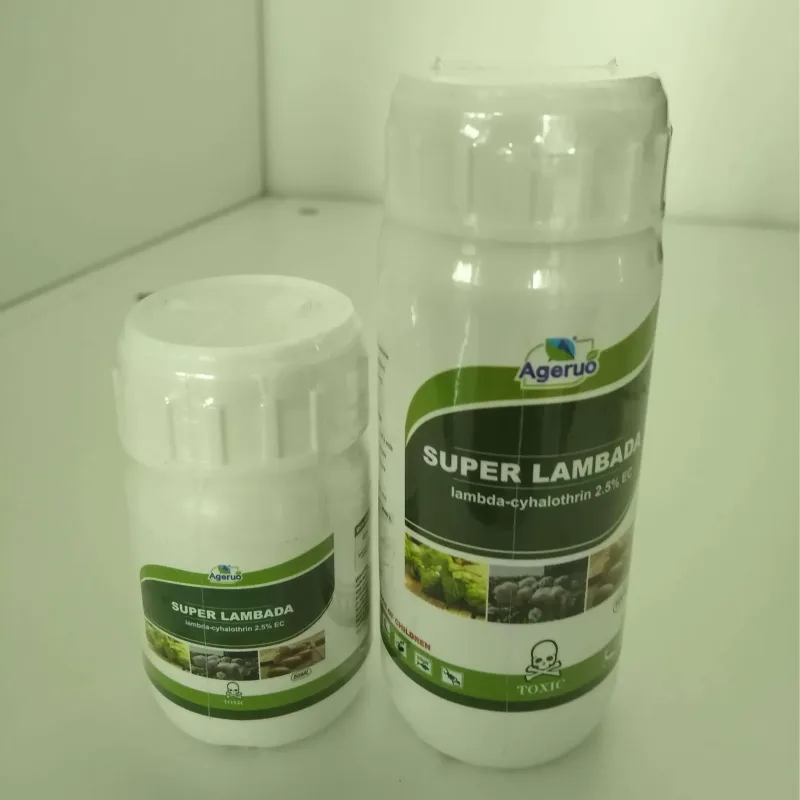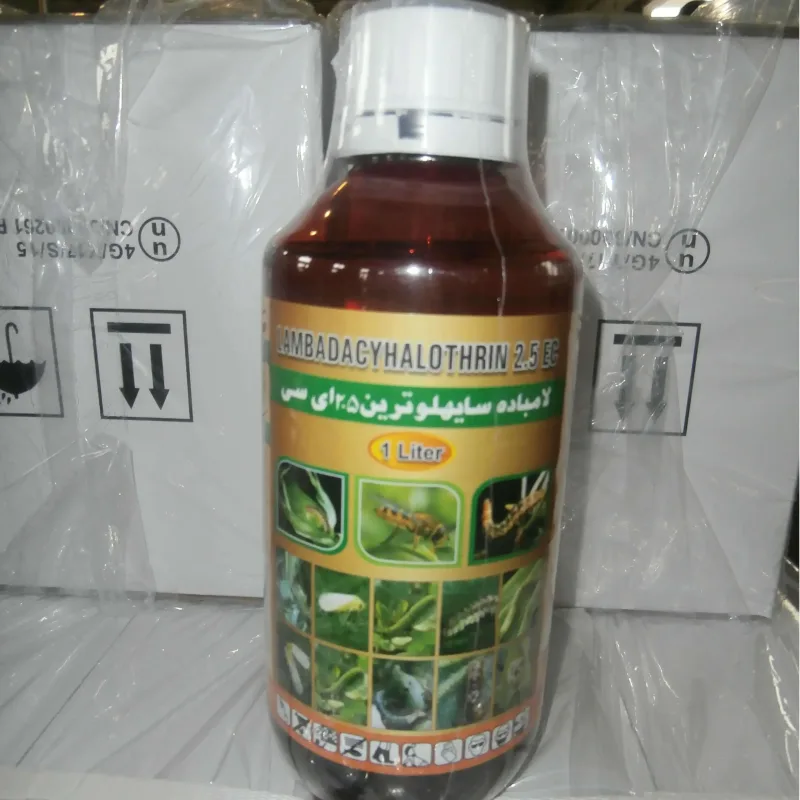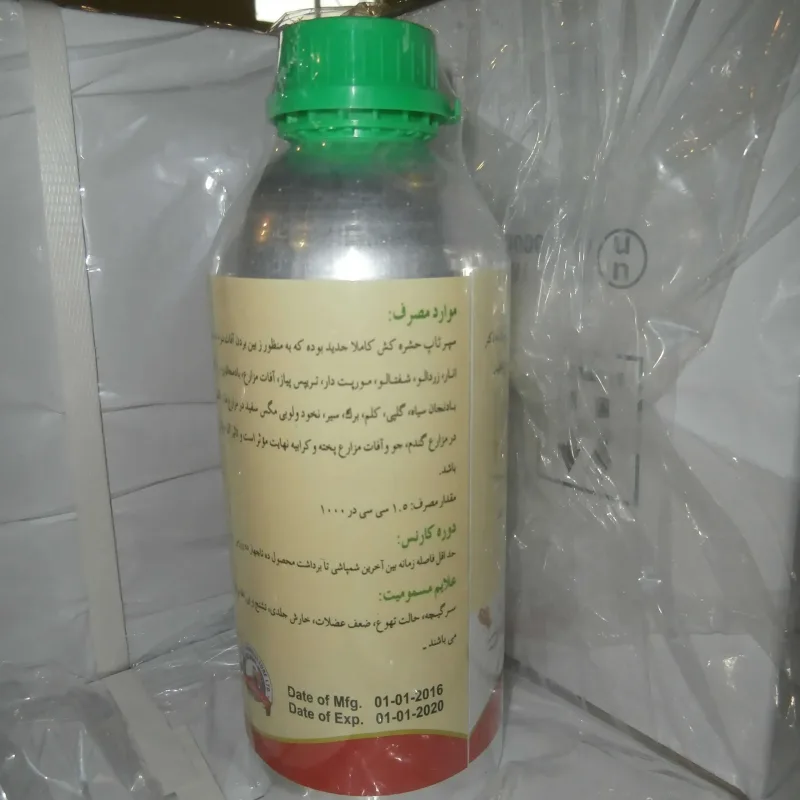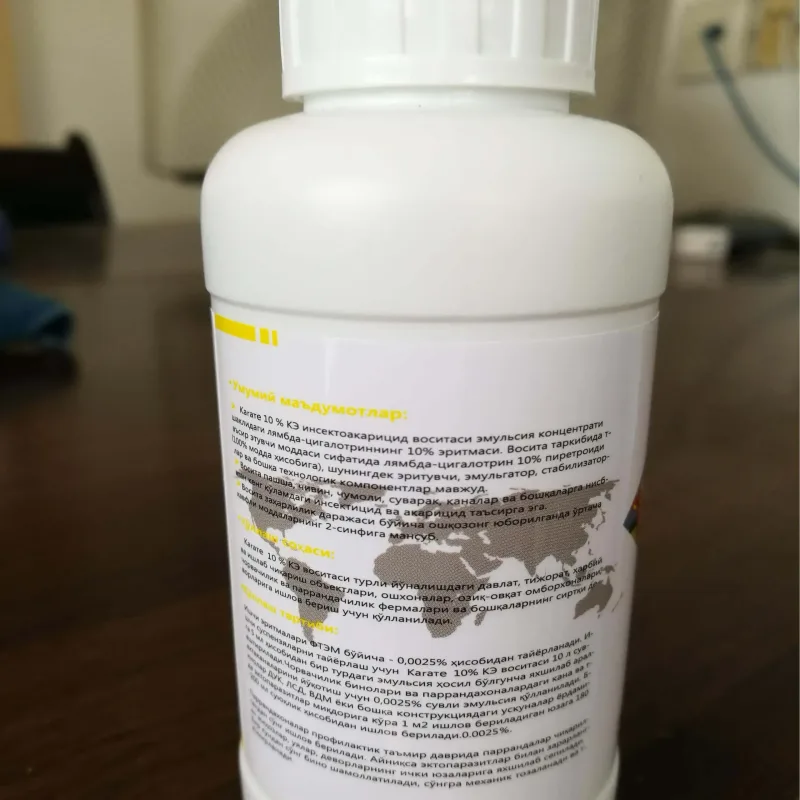Comprehensive Guide to Lambda-Cyhalothrin
Lambda-cyhalothrin is a widely used pyrethroid insecticide that has become a cornerstone in the agriculture industry for controlling a wide range of pests. As a systemic or contact pesticide, it is effective in protecting crops and structures from various insect infestations. In this article, we’ll delve into the many aspects of lambda-cyhalothrin, addressing its uses, how it works, its effectiveness, and the various forms and applications it comes in.
This comprehensive guide will also help answer critical questions regarding its application, such as whether it’s a repellent, its systemic properties, and how long it lasts after application. Let’s explore the various features of this powerful pesticide.
Summary: Key Points About Lambda-Cyhalothrin
| Feature | Details |
|---|---|
| Lambda-Cyhalothrin Uses | Widely used in agriculture to control a range of pests in crops, fruits, and vegetables. |
| Mode of Action | Disrupts the nervous system of pests by affecting sodium channels, causing paralysis. |
| Systemic or Contact? | Contact insecticide – it kills pests on contact, not absorbed by plants. |
| Lambda-Cyhalothrin 2.5 EC Uses | Used for vegetables and lower pest pressure crops. |
| Lambda-Cyhalothrin 5 EC Uses | Applied for higher pest pressure and large-scale agricultural operations. |
| Is It a Repellent? | Not primarily a repellent, more effective as a contact insecticide. |
| How Long Does It Last? | Typically lasts 7-14 days depending on conditions, with rain reducing effectiveness. |
| Skin Contact Treatment | Wash immediately with soap and water; seek medical attention if irritation persists. |
What is Lambda-Cyhalothrin Used For?
Lambda-cyhalothrin is primarily used to control a broad spectrum of pests in agriculture, household settings, and structural pest control. It is particularly effective against insects such as caterpillars, aphids, whiteflies, and mosquitoes. In agriculture, it helps protect food crops like corn, wheat, soybeans, and vegetables, as well as fruit trees and orchards. It is also used in public health pest control, to manage vectors like mosquitoes that carry diseases like malaria and dengue.
How Does Lambda-Cyhalothrin Work?
The mode of action of lambda-cyhalothrin involves the disruption of the nervous system of insects. As a pyrethroid insecticide, it acts on the sodium channels in insect nerves, preventing the normal flow of sodium ions. This results in nerve hyperexcitability, causing paralysis and eventually the death of the pest. Lambda-cyhalothrin is a contact insecticide, meaning it must come into direct contact with the pest to be effective.
Its mode of action is typically very fast, leading to a rapid knockdown of the targeted insect. However, it is important to note that lambda-cyhalothrin is not systemic, meaning it does not move through the plant to protect it from pests feeding on the plant’s tissues. Instead, it remains on the surface of the treated plant.
Lambda-Cyhalothrin Uses in Agriculture
In agriculture, lambda-cyhalothrin is used extensively for controlling a wide range of insect pests that damage crops. It is particularly useful in the protection of:
- Cereal crops: Wheat, corn, and barley
- Fruits and vegetables: Tomatoes, cucumbers, apples, and potatoes
- Oilseed crops: Soybeans, rapeseed, and sunflowers
- Ornamental plants: Protects various garden plants from insect pests
By effectively targeting pests, it helps improve crop yield and quality, while reducing the economic losses caused by insect damage. It is applied through sprays, with varying concentrations such as lambda-cyhalothrin 2.5 EC or lambda-cyhalothrin 5 EC, depending on the pest pressure and type of crop.
Is Lambda-Cyhalothrin Systemic or Contact?
Lambda-cyhalothrin is classified as a contact insecticide, which means it is effective only when it directly contacts the pest. It is not a systemic insecticide, meaning it does not get absorbed into the plant and transported to other parts. Instead, lambda-cyhalothrin works by killing insects when they come into contact with the treated plant or surface.
Is Lambda-Cyhalothrin a Repellent?
Lambda-cyhalothrin is not primarily a repellent. While it may have some repellent properties, its primary function is as a contact insecticide, meaning it works by killing insects upon contact rather than simply deterring them. Its knockdown effect is rapid, but it doesn’t create a long-lasting repellent barrier.
How Long Does Lambda-Cyhalothrin Last?
The effectiveness of lambda-cyhalothrin varies depending on environmental conditions. On surfaces, the product can last anywhere from 7 to 14 days, but rain or irrigation can wash it off, reducing its effectiveness. Residue persistence also depends on the formulation; for example, a higher concentration such as lambda-cyhalothrin 5 EC may provide longer-lasting results compared to lambda-cyhalothrin 2.5 EC.
In agricultural applications, it is common to reapply the insecticide every 7 to 14 days depending on pest pressure and the crop’s growth stage.
Lambda-Cyhalothrin 2.5 EC Uses vs. Lambda-Cyhalothrin 5 EC Uses
The concentration of lambda-cyhalothrin in the formulation plays a role in its application:
-
Lambda-cyhalothrin 2.5 EC: Commonly used for vegetable crops and areas where moderate insect pressure is present. It is effective for a variety of garden pests, including aphids and whiteflies.
-
Lambda-cyhalothrin 5 EC: This more concentrated formula is often used in areas with higher insect infestations or in large-scale agricultural operations. It provides longer protection against a wider range of pests, including caterpillars, beetles, and mosquitoes.
Both formulations are effective but should be used based on the pest level, crop type, and pest resistance management strategies.
Lambda-Cyhalothrin Skin Contact Treatment
In the case of accidental skin contact, lambda-cyhalothrin may cause mild irritation or dermatitis. It is important to follow proper safety precautions when handling this pesticide. Skin contact treatment includes the following steps:
- Immediately wash the affected area with soap and water.
- If irritation persists, seek medical attention.
- Wear protective gloves and clothing during application to avoid exposure.
Is Lambda-Cyhalothrin Used on Food Crops?
Yes, lambda-cyhalothrin is approved for use on food crops. However, it is essential to follow the pre-harvest interval (PHI), which dictates how long after application the crop can be harvested safely. The PHI typically ranges from 3 to 14 days, depending on the crop and regional regulations. This ensures that residues of lambda-cyhalothrin are within safe limits for human consumption.
Conclusion
Lambda-cyhalothrin is a versatile and highly effective insecticide used in both agriculture and public health pest control. Whether applied as lambda-cyhalothrin 2.5 EC or lambda-cyhalothrin 5 EC, it provides reliable pest control for a variety of crops and environments. Understanding its mode of action, systemic properties, and how long it lasts can help users maximize its effectiveness while minimizing risks.
By addressing the key aspects of lambda-cyhalothrin, this article provides a comprehensive overview to guide users in selecting the best formulation and usage strategies for their pest control needs.
Lambda-cyhalothrin is a widely used pyrethroid insecticide that has become a cornerstone in the agriculture industry for controlling a wide range of pests. As a systemic or contact pesticide, it is effective in protecting crops and structures from various insect infestations. In this article, we’ll delve into the many aspects of lambda-cyhalothrin, addressing its uses, how it works, its effectiveness, and the various forms and applications it comes in.
This comprehensive guide will also help answer critical questions regarding its application, such as whether it’s a repellent, its systemic properties, and how long it lasts after application. Let’s explore the various features of this powerful pesticide.
Summary: Key Points About Lambda-Cyhalothrin
| Feature | Details |
|---|---|
| Lambda-Cyhalothrin Uses | Widely used in agriculture to control a range of pests in crops, fruits, and vegetables. |
| Mode of Action | Disrupts the nervous system of pests by affecting sodium channels, causing paralysis. |
| Systemic or Contact? | Contact insecticide – it kills pests on contact, not absorbed by plants. |
| Lambda-Cyhalothrin 2.5 EC Uses | Used for vegetables and lower pest pressure crops. |
| Lambda-Cyhalothrin 5 EC Uses | Applied for higher pest pressure and large-scale agricultural operations. |
| Is It a Repellent? | Not primarily a repellent, more effective as a contact insecticide. |
| How Long Does It Last? | Typically lasts 7-14 days depending on conditions, with rain reducing effectiveness. |
| Skin Contact Treatment | Wash immediately with soap and water; seek medical attention if irritation persists. |
What is Lambda-Cyhalothrin Used For?
Lambda-cyhalothrin is primarily used to control a broad spectrum of pests in agriculture, household settings, and structural pest control. It is particularly effective against insects such as caterpillars, aphids, whiteflies, and mosquitoes. In agriculture, it helps protect food crops like corn, wheat, soybeans, and vegetables, as well as fruit trees and orchards. It is also used in public health pest control, to manage vectors like mosquitoes that carry diseases like malaria and dengue.
How Does Lambda-Cyhalothrin Work?
The mode of action of lambda-cyhalothrin involves the disruption of the nervous system of insects. As a pyrethroid insecticide, it acts on the sodium channels in insect nerves, preventing the normal flow of sodium ions. This results in nerve hyperexcitability, causing paralysis and eventually the death of the pest. Lambda-cyhalothrin is a contact insecticide, meaning it must come into direct contact with the pest to be effective.
Its mode of action is typically very fast, leading to a rapid knockdown of the targeted insect. However, it is important to note that lambda-cyhalothrin is not systemic, meaning it does not move through the plant to protect it from pests feeding on the plant’s tissues. Instead, it remains on the surface of the treated plant.
Lambda-Cyhalothrin Uses in Agriculture
In agriculture, lambda-cyhalothrin is used extensively for controlling a wide range of insect pests that damage crops. It is particularly useful in the protection of:
- Cereal crops: Wheat, corn, and barley
- Fruits and vegetables: Tomatoes, cucumbers, apples, and potatoes
- Oilseed crops: Soybeans, rapeseed, and sunflowers
- Ornamental plants: Protects various garden plants from insect pests
By effectively targeting pests, it helps improve crop yield and quality, while reducing the economic losses caused by insect damage. It is applied through sprays, with varying concentrations such as lambda-cyhalothrin 2.5 EC or lambda-cyhalothrin 5 EC, depending on the pest pressure and type of crop.
Is Lambda-Cyhalothrin Systemic or Contact?
Lambda-cyhalothrin is classified as a contact insecticide, which means it is effective only when it directly contacts the pest. It is not a systemic insecticide, meaning it does not get absorbed into the plant and transported to other parts. Instead, lambda-cyhalothrin works by killing insects when they come into contact with the treated plant or surface.
Is Lambda-Cyhalothrin a Repellent?
Lambda-cyhalothrin is not primarily a repellent. While it may have some repellent properties, its primary function is as a contact insecticide, meaning it works by killing insects upon contact rather than simply deterring them. Its knockdown effect is rapid, but it doesn’t create a long-lasting repellent barrier.
How Long Does Lambda-Cyhalothrin Last?
The effectiveness of lambda-cyhalothrin varies depending on environmental conditions. On surfaces, the product can last anywhere from 7 to 14 days, but rain or irrigation can wash it off, reducing its effectiveness. Residue persistence also depends on the formulation; for example, a higher concentration such as lambda-cyhalothrin 5 EC may provide longer-lasting results compared to lambda-cyhalothrin 2.5 EC.
In agricultural applications, it is common to reapply the insecticide every 7 to 14 days depending on pest pressure and the crop’s growth stage.
Lambda-Cyhalothrin 2.5 EC Uses vs. Lambda-Cyhalothrin 5 EC Uses
The concentration of lambda-cyhalothrin in the formulation plays a role in its application:
-
Lambda-cyhalothrin 2.5 EC: Commonly used for vegetable crops and areas where moderate insect pressure is present. It is effective for a variety of garden pests, including aphids and whiteflies.
-
Lambda-cyhalothrin 5 EC: This more concentrated formula is often used in areas with higher insect infestations or in large-scale agricultural operations. It provides longer protection against a wider range of pests, including caterpillars, beetles, and mosquitoes.
Both formulations are effective but should be used based on the pest level, crop type, and pest resistance management strategies.
Lambda-Cyhalothrin Skin Contact Treatment
In the case of accidental skin contact, lambda-cyhalothrin may cause mild irritation or dermatitis. It is important to follow proper safety precautions when handling this pesticide. Skin contact treatment includes the following steps:
- Immediately wash the affected area with soap and water.
- If irritation persists, seek medical attention.
- Wear protective gloves and clothing during application to avoid exposure.
Is Lambda-Cyhalothrin Used on Food Crops?
Yes, lambda-cyhalothrin is approved for use on food crops. However, it is essential to follow the pre-harvest interval (PHI), which dictates how long after application the crop can be harvested safely. The PHI typically ranges from 3 to 14 days, depending on the crop and regional regulations. This ensures that residues of lambda-cyhalothrin are within safe limits for human consumption.
Conclusion
Lambda-cyhalothrin is a versatile and highly effective insecticide used in both agriculture and public health pest control. Whether applied as lambda-cyhalothrin 2.5 EC or lambda-cyhalothrin 5 EC, it provides reliable pest control for a variety of crops and environments. Understanding its mode of action, systemic properties, and how long it lasts can help users maximize its effectiveness while minimizing risks.
By addressing the key aspects of lambda-cyhalothrin, this article provides a comprehensive overview to guide users in selecting the best formulation and usage strategies for their pest control needs.

